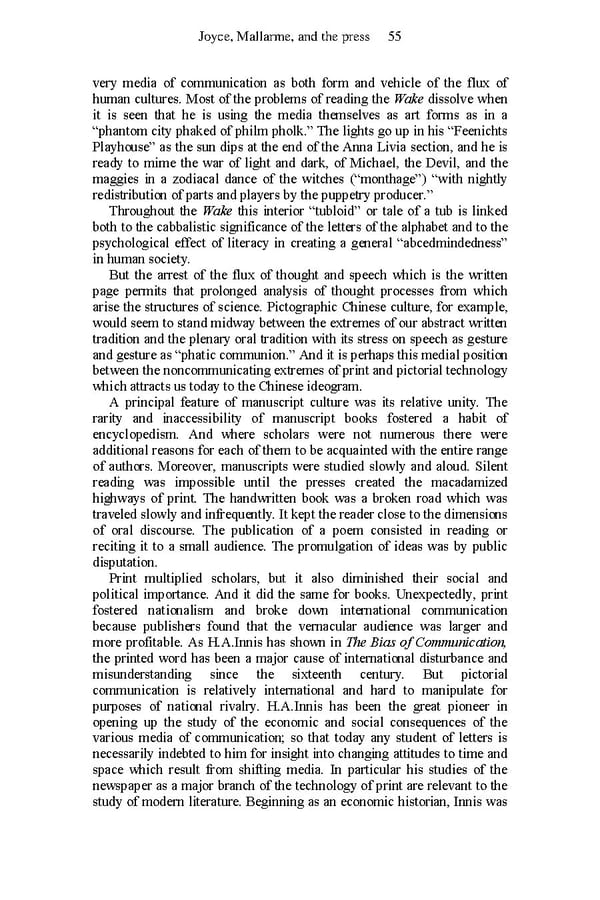Joyce, Mallarme, and the press 55 very media of communication as both form and vehicle of the flux of human cultures. Most of the problems of reading the Wake dissolve when it is seen that he is using the media themselves as art forms as in a “phantom city phaked of philm pholk.” The lights go up in his “Feenichts Playhouse” as the sun dips at the end of the Anna Livia section, and he is ready to mime the war of light and dark, of Michael, the Devil, and the maggies in a zodiacal dance of the witches (“monthage”) “with nightly redistribution of parts and players by the puppetry producer.” Throughout the Wake this interior “tubloid” or tale of a tub is linked both to the cabbalistic significance of the letters of the alphabet and to the psychological effect of literacy in creating a general “abcedmindedness” in human society. But the arrest of the flux of thought and speech which is the written page permits that prolonged analysis of thought processes from which arise the structures of science. Pictographic Chinese culture, for example, would seem to stand midway between the extremes of our abstract written tradition and the plenary oral tradition with its stress on speech as gesture and gesture as “phatic communion.” And it is perhaps this medial position between the noncommunicating extremes of print and pictorial technology which attracts us today to the Chinese ideogram. A principal feature of manuscript culture was its relative unity. The rarity and inaccessibility of manuscript books fostered a habit of encyclopedism. And where scholars were not numerous there were additional reasons for each of them to be acquainted with the entire range of authors. Moreover, manuscripts were studied slowly and aloud. Silent reading was impossible until the presses created the macadamized highways of print. The handwritten book was a broken road which was traveled slowly and infrequently. It kept the reader close to the dimensions of oral discourse. The publication of a poem consisted in reading or reciting it to a small audience. The promulgation of ideas was by public disputation. Print multiplied scholars, but it also diminished their social and political importance. And it did the same for books. Unexpectedly, print fostered nationalism and broke down international communication because publishers found that the vernacular audience was larger and more profitable. As H.A.Innis has shown in The Bias of Communication, the printed word has been a major cause of international disturbance and misunderstanding since the sixteenth century. But pictorial communication is relatively international and hard to manipulate for purposes of national rivalry. H.A.Innis has been the great pioneer in opening up the study of the economic and social consequences of the various media of communication; so that today any student of letters is necessarily indebted to him for insight into changing attitudes to time and space which result from shifting media. In particular his studies of the newspaper as a major branch of the technology of print are relevant to the study of modern literature. Beginning as an economic historian, Innis was
 Essential McLuhan Page 61 Page 63
Essential McLuhan Page 61 Page 63